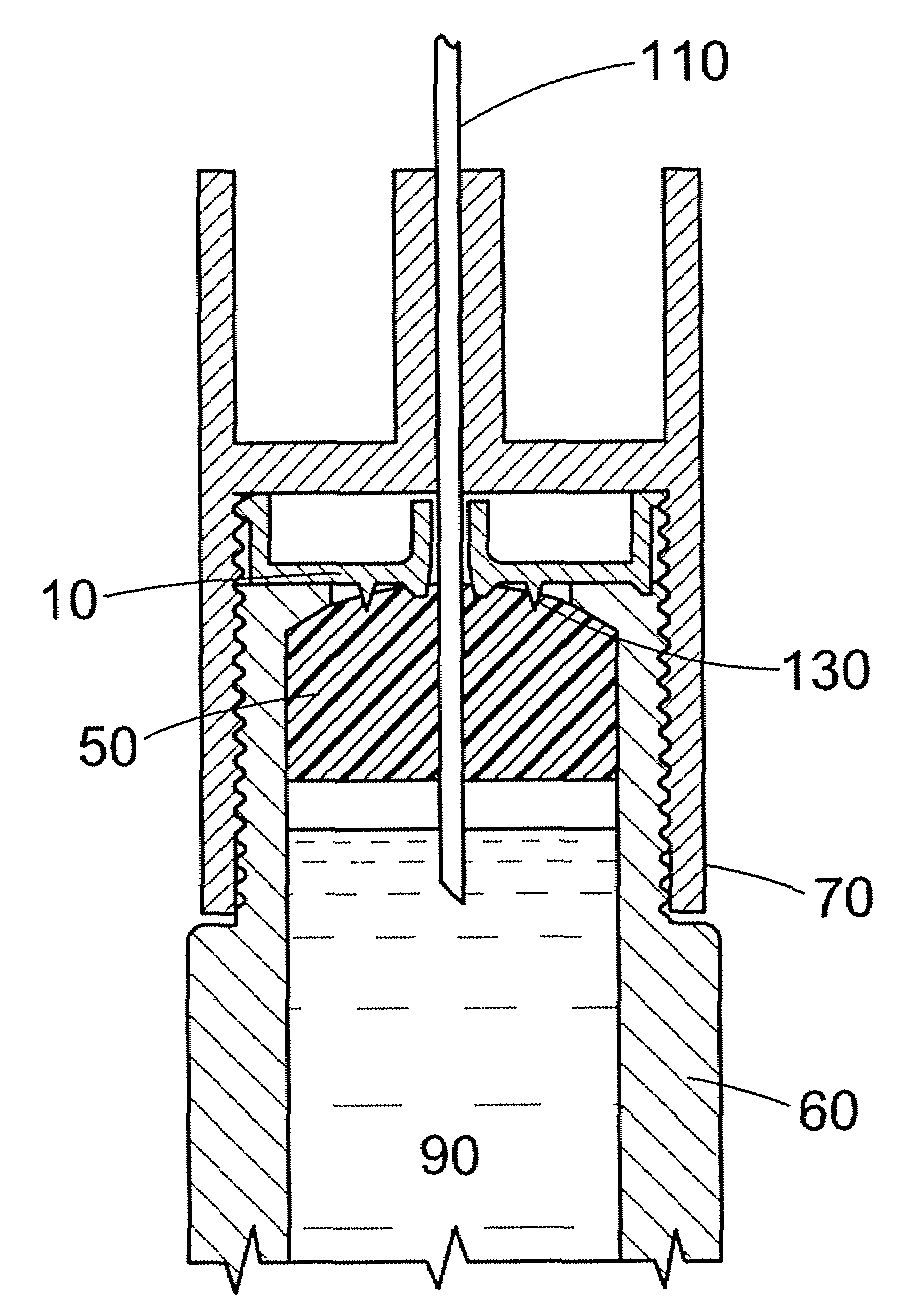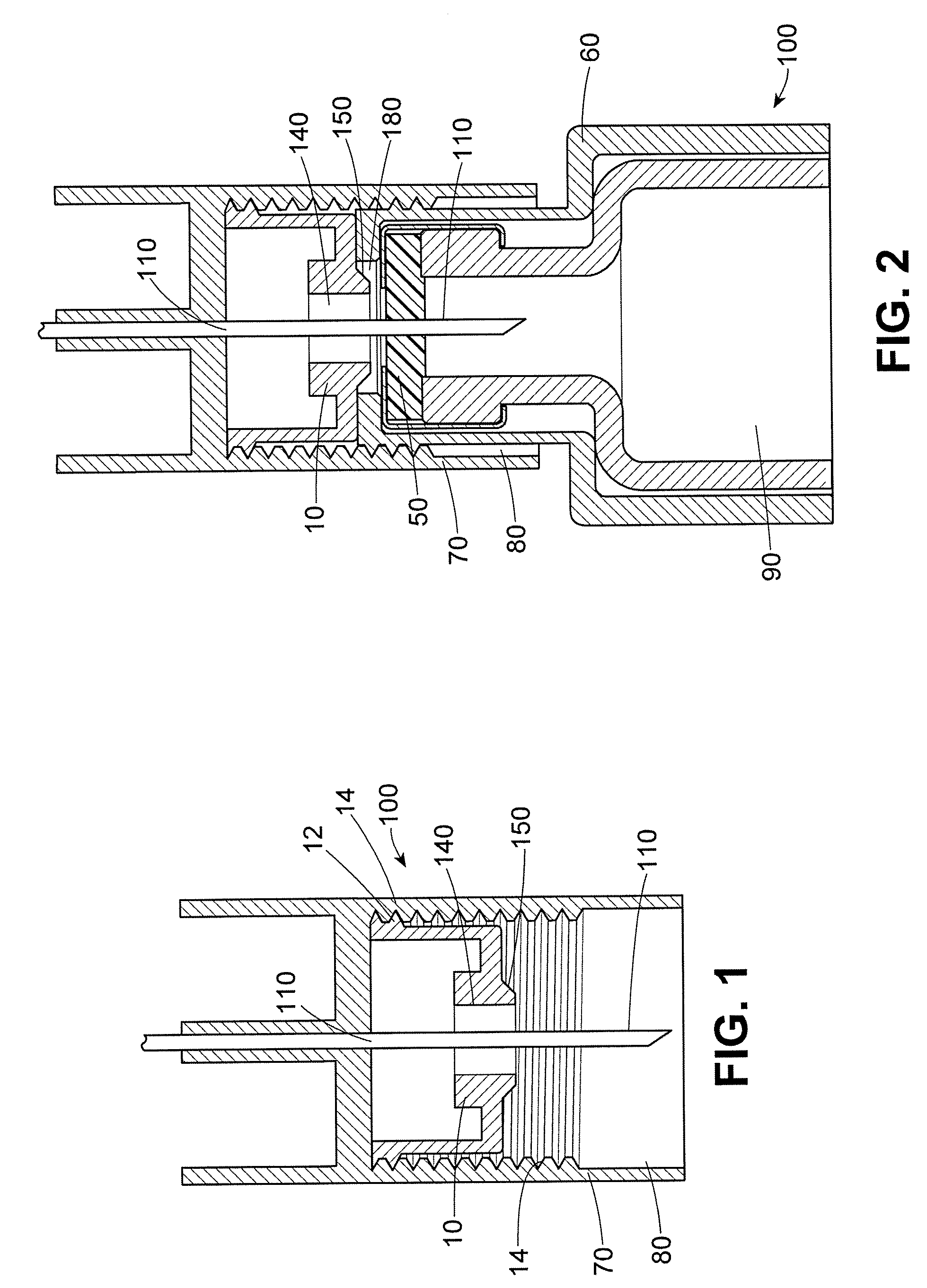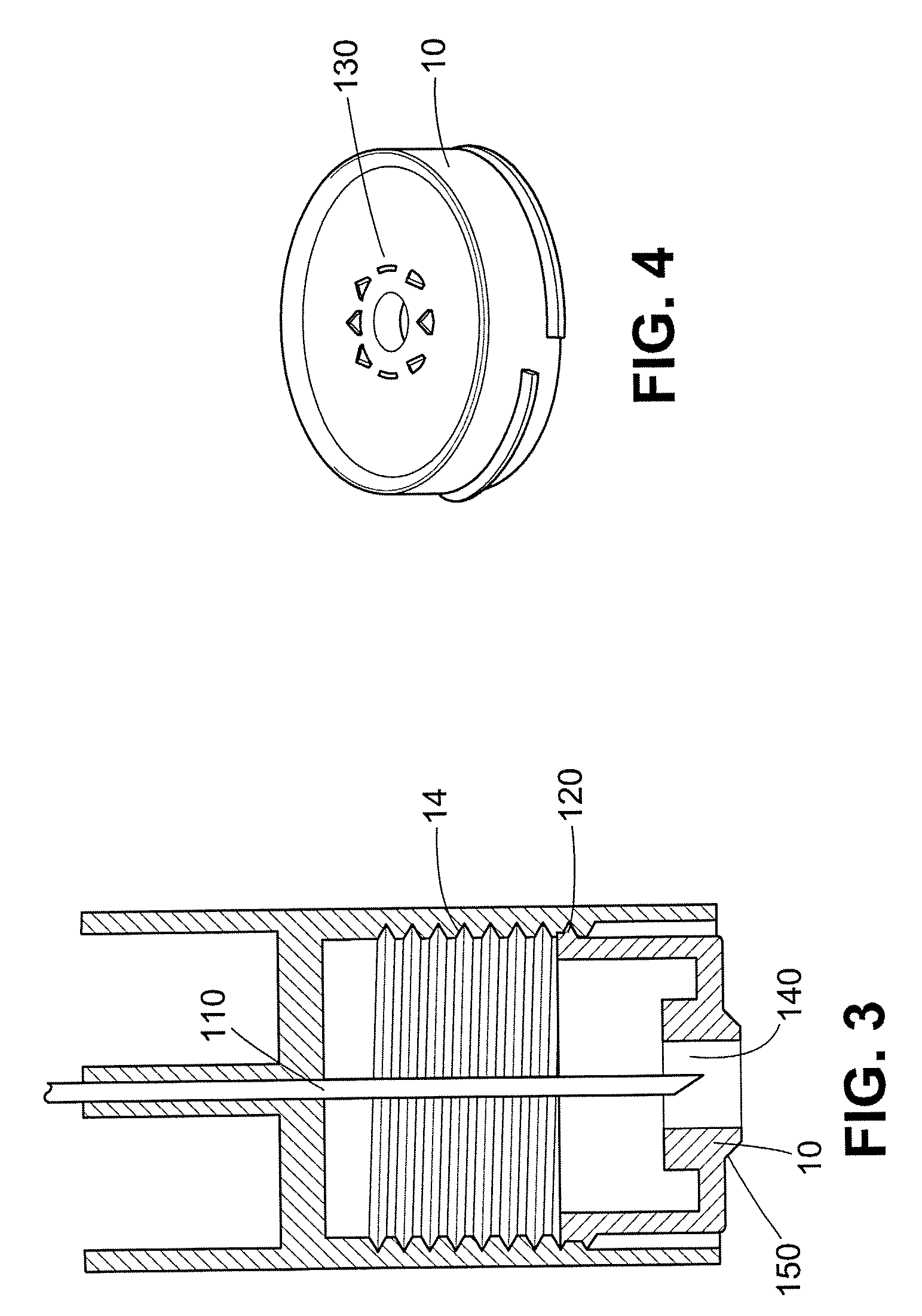Safety pen needle with non-injection end passive safety features
a safety pen and needle technology, applied in the direction of intravenous devices, infusion needles, infusion devices, etc., can solve the problems of healthcare workers being exposed to the risk of infection from blood-borne pathogens needlestick injuries of healthcare workers,
- Summary
- Abstract
- Description
- Claims
- Application Information
AI Technical Summary
Benefits of technology
Problems solved by technology
Method used
Image
Examples
Embodiment Construction
[0017]The safety shield system according to the invention is “passive” because shielding of the non-injection end is automatic upon removing the pen-injector. User-implemented steps are not required to shield the non-injection end of the needle. The terms “injection end” and “non-injection end” refer to directions on the device. The injection end refers to a direction toward the end of the device that is normally pressed against a patient's body during an injection (the distal end), while the non-injection end refers to the opposite direction, toward the proximal end, whether the patient injects himself or herself, whether someone else administers the injection, and whether or not an injection is actually accomplished.
[0018]As used herein, the non-injection end shield “covers” or “shrouds” the needle when the tip of the needle does not extend beyond the end wall of the shield, notwithstanding that the tip of the needle may be quite close to the aperture in the shield, and exposed to...
PUM
 Login to View More
Login to View More Abstract
Description
Claims
Application Information
 Login to View More
Login to View More - R&D
- Intellectual Property
- Life Sciences
- Materials
- Tech Scout
- Unparalleled Data Quality
- Higher Quality Content
- 60% Fewer Hallucinations
Browse by: Latest US Patents, China's latest patents, Technical Efficacy Thesaurus, Application Domain, Technology Topic, Popular Technical Reports.
© 2025 PatSnap. All rights reserved.Legal|Privacy policy|Modern Slavery Act Transparency Statement|Sitemap|About US| Contact US: help@patsnap.com



